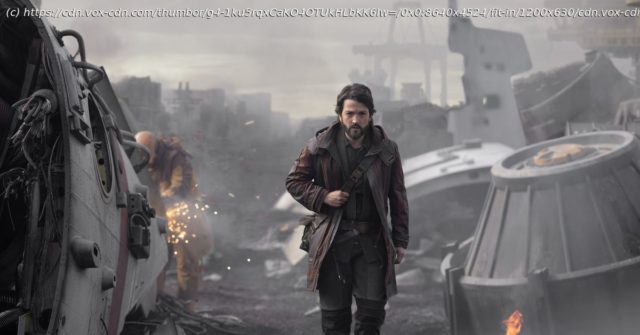The new Star Wars Disney Plus show Andor will focus heavily on the history of the Rebel Alliance. Here’s how the Rebellion has been depicted in other Star Wars movies, games, shows, and books.
From the moment the words “Rebel spaceships, striking from a hidden base, have won their first victory against the evil Galactic Empire” appeared in the opening crawl of Star Wars, the minds of fans raced, imagining the circumstances surrounding that victory. While 2016’s Rogue One: A Star Wars story presents the canonical telling of those events, the intervening years are filled with different interpretations and tales of how the Rebel Alliance came together into a cohesive force in order to attain that first victory.
Now, with the release of Andor on Disney Plus, a series which promises to follow the development of Rogue One protagonist Cassian Andor from his days as a budding rebel to his death on the sands of Scarif, it’s worth looking back on some of the previous efforts to dramatize the words in the crawl and explain how the Rebel Alliance came to be, as well as examining how Andor is uniquely positioned to stitch some of those different narratives into a cohesive whole.
One of the first attempts to dramatize the opening crawl and provide more details about the nascent Rebel Alliance came via a vintage format. In 1981, NPR released a Star Wars radio drama based on A New Hope and produced with the blessing of George Lucas. It featured sounds and music from the movies, along with Mark Hamill and Anthony Daniels reprising their cinematic roles. One of the fun things about the radio drama is it dramatizes scenes left on the cutting room floor (like Luke’s encounter with his old friend Biggs Darklighter on Tatooine) while also adding scenes which didn’t appear in the movie, notably in its second and third episodes, “Points of Origin” and “Black Knight, White Princess, and Pawns.”
In “Points of Origin,” Leia and her father (then called Prestor Organa, rather than Bail) are entertaining the odious Imperial Lord Tion on Alderaan. Leia learns about the existence of the Death Star and the plans acquired by Rebel agents after an attack on an Imperial convoy. When she lets slip this knowledge, Tion attempts to arrest her but is ultimately shot. This prompts Leia’s father to more directly help the Rebellion, and Leia convinces her father to let her take their ship, the blockade runner Tantive IV, to the rebels on the planet Toprawa to retrieve the plans.
In “Black Knight, White Princess, and Pawns,” Leia receives the Rebel transmission from Toprawa, but is detected by Darth Vader. She is pursued by Vader’s Star Destroyer as she attempts to reach Obi-Wan Kenobi and recruit him to the cause of the Rebellion, thereby bringing the radio drama up to the point where the first film begins. Obviously, the final act of Rogue One retcons away nearly all of that story, but the radio drama still represents a fun early take on the origins of the Rebel Alliance in a very different format.
1991 saw a rebirth of sorts for Star Wars after a relatively fallow period following the release of Return of the Jedi in 1983. It began not in the form of new movies, but via new novels; specifically, the Timothy Zahn-penned Thrawn trilogy, (consisting of Heir to the Empire, Dark Force Rising, and The Last Command and named after its central antagonist, the captivating Grand Admiral Thrawn). The success of those novels would lead to a burgeoning “Expanded Universe” of semi-canonical stories told across multiple media, from books to comics to video games, over the next two decades.
While the Thrawn trilogy is set five years after the end of the Return of the Jedi, it does briefly play around with the origins of the Rebellion via the introduction of a new character, the Corellian Garm Bel Iblis. Zahn reveals that in the early days of the Rebellion, Bel Iblis was one of the leaders of three different rebel factions, with the other two being led by Leia’s father (now Bail Organa) and Mon Mothma (the political leader of the Rebel Alliance in Return of the Jedi).
Домой
United States
USA — software How Star Wars has depicted the rise of the Rebel Alliance through...






